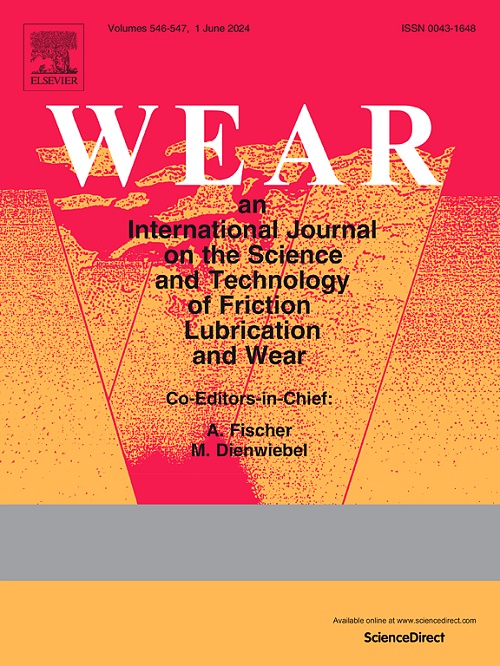Effect of deposition temperature on the phase transition of Ti, Al, C and related properties of the graphite-like carbon film
IF 5.3
1区 工程技术
Q1 ENGINEERING, MECHANICAL
引用次数: 0
Abstract
The graphite-like carbon films contained Ti and Al elements were prepared by magnetron sputtering at different deposition temperatures and the structure, corrosive as well as tribological properties in different environments with ZrO2 as counterpart balls were investigated. The results revealed that the sp3C content in the film first increased and then decreased, the Ti, Al elements in the films changed from TiC nanocrystals to Ti3AlC with increasing temperature. Specially, there were totally Ti3AlC with an ant-perovskite phase at 350 °C. Consequently, the film contained Ti3AlC phase showed better corrosive resistance compared to that contained TiC phase, due to the TiC nanocrystal reduced the migration barrier and penetration energy of Cl ions in the corrosion medium, which accelerated the process of corrosion failure. It was noteworthy that the film prepared at 350 °C showed better corrosion resistance due to its higher sp3C content, higher hydrophobicity, higher adhesion strength, lower residual internal stresses, and lower film porosity. All the film exhibited better tribological properties in 3.5 wt% NaCl solution than in air related to the water lubrication. Especially, owing to the synthesis effect of TiC and Ti3AlC phase, the film prepared at 300 °C showed better tribological properties.

求助全文
约1分钟内获得全文
求助全文
来源期刊

Wear
工程技术-材料科学:综合
CiteScore
8.80
自引率
8.00%
发文量
280
审稿时长
47 days
期刊介绍:
Wear journal is dedicated to the advancement of basic and applied knowledge concerning the nature of wear of materials. Broadly, topics of interest range from development of fundamental understanding of the mechanisms of wear to innovative solutions to practical engineering problems. Authors of experimental studies are expected to comment on the repeatability of the data, and whenever possible, conduct multiple measurements under similar testing conditions. Further, Wear embraces the highest standards of professional ethics, and the detection of matching content, either in written or graphical form, from other publications by the current authors or by others, may result in rejection.
 求助内容:
求助内容: 应助结果提醒方式:
应助结果提醒方式:


